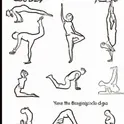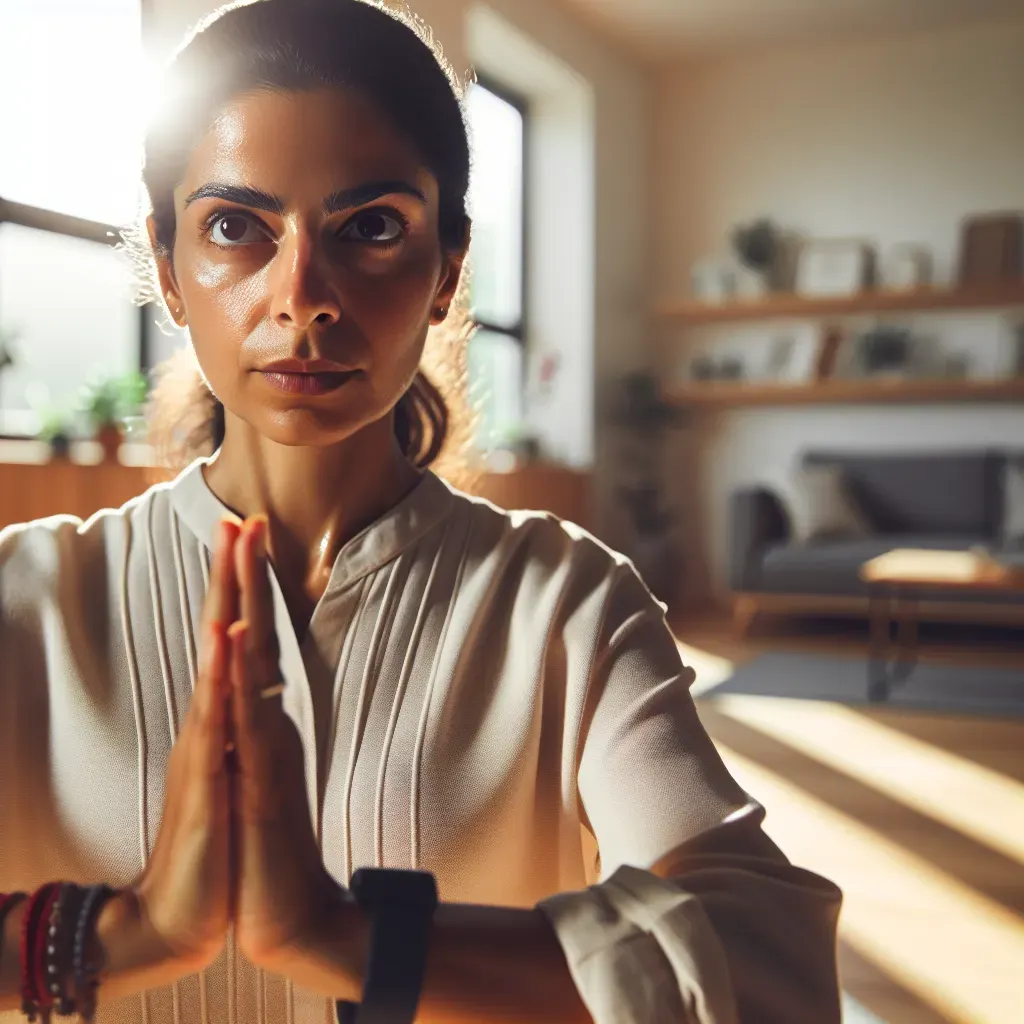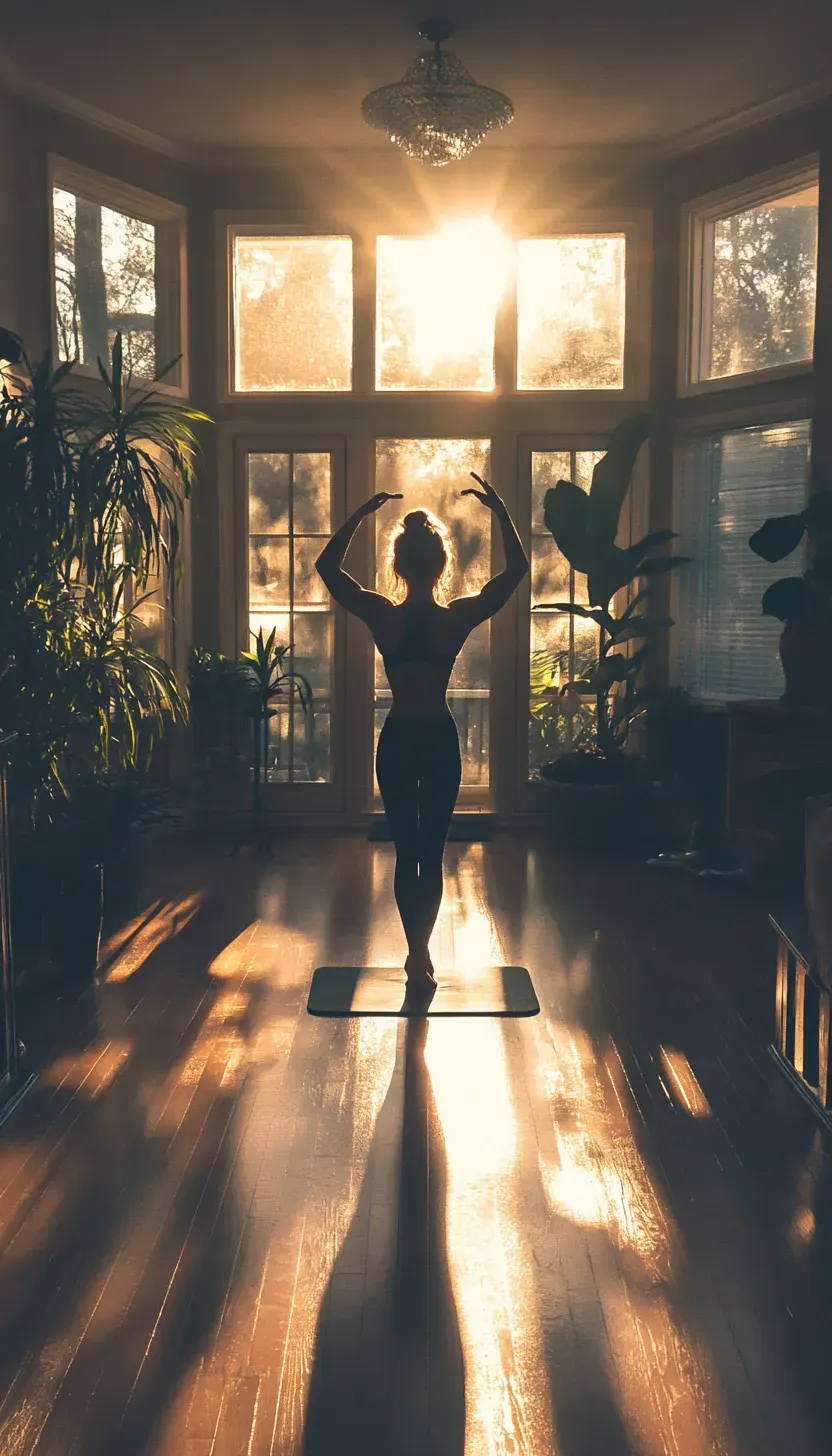How to Practice Yoga on Your Own: A Complete Guide
Table of Contents
1.Can I Practice Yoga on My Own?
2.Is It Possible to Teach Yourself Yoga?
3.How Do I Start Learning Yoga by Myself?
- Create a Dedicated Space
- Set a Goal for Your Practice
- Start with Basic Poses
- Follow a Beginner-Friendly Routine
- Focus on Breathwork
- End with Relaxation
4.Is 20 Minutes of Yoga a Day Enough?
5.How Many Minutes of Yoga Should a Beginner Do?
6.Is Yoga by Itself Enough Exercise?
Yoga is a transformative practice that promotes physical strength, flexibility, and mental clarity.
While many people enjoy attending yoga classes, practicing yoga on your own can be equally rewarding. It gives you the freedom to move at your own pace, focus on personal goals, and create a routine that fits seamlessly into your daily life.
In this guide, we’ll explore whether you can teach yourself yoga, how to get started, how much time you should dedicate to practice, and whether yoga alone is enough for your fitness journey.
Can I Practice Yoga on My Own?
Yes, you can absolutely practice yoga on your own! Yoga is a personal journey, and many practitioners find that self-guided sessions allow them to connect more deeply with their bodies and minds.
While in-person classes provide guidance, self-practice offers flexibility and autonomy.
Practicing alone lets you explore postures at your own pace without feeling pressured to keep up with a class.
It also allows you to focus on areas that need extra attention, whether it’s improving flexibility, building strength, or mastering breathwork techniques like 9D Breathwork to enhance relaxation and mindfulness.
Is It Possible to Teach Yourself Yoga?
Yes, it is entirely possible to teach yourself yoga, especially with the abundance of online resources available today.
While having an instructor can be beneficial, many people successfully learn yoga through books, videos, and guided programs.
Here are some ways to self-learn yoga:
- Follow Online Yoga Classes – Platforms like YouTube, paid membership sites, or guided programs can provide structured lessons.
- Use Yoga Books – Books like Easy Yoga For Everything With Peggy Cappy are excellent for learning gentle yoga techniques at home.
- Listen to Your Body – Pay attention to how your body responds to different postures, and modify poses as needed.
- Practice with Guided Meditation & Breathwork – Breath control is a key part of yoga, and guided breathwork sessions can enhance your experience.
If you’re new to yoga, start slow and focus on mastering the basics before moving on to advanced poses.
How Do I Start Learning Yoga by Myself?
Starting your yoga journey at home requires just a few essential steps. Here’s a step-by-step guide:
1. Create a Dedicated Space
Find a quiet and comfortable space where you can practice without distractions. A yoga mat, some cushions, and dim lighting can help set the right ambiance.
2. Set a Goal for Your Practice
Are you looking to improve flexibility, reduce stress, or build strength? Having a goal will help you stay motivated and choose the right poses.
3. Start with Basic Poses
Begin with foundational poses like:
- Mountain Pose (Tadasana) – Improves posture and balance.
- Downward Dog (Adho Mukha Svanasana) – Strengthens the upper body and stretches the spine.
- Child’s Pose (Balasana) – Great for relaxation and stretching the lower back.
- Warrior Poses (Virabhadrasana I & II) – Enhance strength and stability.
4. Follow a Beginner-Friendly Routine
Start with a 15-20 minute routine that includes stretching, a few basic poses, and relaxation at the end. Online resources like Easy Yoga For Everything With Peggy Cappy offer excellent beginner-friendly routines.
5. Focus on Breathwork
Breathing is the essence of yoga. Practicing deep breathing techniques, such as 9D Breathwork, can help you improve focus, reduce stress, and enhance overall well-being.
6. End with Relaxation
Always finish your session with a relaxation pose like Savasana (Corpse Pose) to allow your body to absorb the benefits of the practice.
Is 20 Minutes of Yoga a Day Enough?
Yes! A daily 20-minute yoga session can provide significant physical and mental benefits. Even a short practice can:
- Improve flexibility and mobility.
- Reduce stress and anxiety.
- Increase strength and balance.
- Enhance focus and mental clarity.
If you're short on time, focusing on a 20-minute flow that includes breathing exercises, stretching, and a few strength-building poses is a great way to stay consistent.
How Many Minutes of Yoga Should a Beginner Do?
As a beginner, start with 10-20 minutes per session and gradually increase the duration as your body adapts. Here’s a suggested progression:
- Week 1-2: 10 minutes per session, focusing on breathing and simple stretches.
- Week 3-4: 15-20 minutes, incorporating basic standing poses.
- After 1 Month: 30 minutes or more, including a mix of poses, breathwork, and relaxation.
The key is to listen to your body and not push too hard, especially in the beginning.
Is Yoga by Itself Enough Exercise?
Yoga offers numerous benefits, but whether it is enough as a standalone exercise depends on your fitness goals.
Yoga Can Be Enough If:
- You practice dynamic yoga styles like Vinyasa or Power Yoga that elevate your heart rate.
- You incorporate strength-focused poses like Plank, Warrior poses, and Chair Pose.
- You maintain consistency by practicing multiple times a week.
You May Need Additional Exercise If:
- Your goal is to build significant muscle mass or cardiovascular endurance.
- You prefer high-intensity workouts like running or weightlifting.
- You want to meet general cardio recommendations (e.g., 150 minutes of moderate-intensity exercise per week).
For a balanced approach, consider combining yoga with walking, strength training, or breathwork practices like 9D Breathwork to enhance overall fitness.
Final Thoughts
Practicing yoga on your own is a fulfilling and rewarding experience. With the right approach, you can build a consistent self-practice routine that enhances both physical and mental well-being.
Whether you’re aiming to improve flexibility, reduce stress, or simply enjoy the peace that yoga brings, following these steps will help you succeed.
Start with small, consistent steps, make use of guided resources like Easy Yoga For Everything With Peggy Cappy, and integrate 9D Breathwork for a well-rounded practice.
Are you ready to begin your self-guided yoga journey? Let us know your favorite yoga poses and how you plan to incorporate yoga into your daily routine.
Check out our guide on Easy Yoga Poses For Stiff Beginners: A Comprehensive Guide
People Also Ask
1.Can I start yoga alone at home?
Yes! With the right resources, like online videos and books, you can easily start self-guided yoga.
2.What is the best time of day to practice yoga?
Morning is ideal for energy, while evening yoga helps with relaxation and sleep.
3.How often should a beginner practice yoga?
Start with 2-3 days per week and gradually increase to daily practice.
4.Do I need special equipment for yoga at home?
A yoga mat is essential, but blocks and straps can be helpful for modifications.
5.Is 10 minutes of yoga a day enough?
Yes! Even 10 minutes can improve flexibility, reduce stress, and build mindfulness.
6.What are the easiest yoga poses for beginners?
Child’s Pose, Downward Dog, Mountain Pose, and Cat-Cow are great starting points.
7.Can yoga replace cardio and strength training?
Yoga builds strength and flexibility, but may not fully replace cardio workouts.
8.Should I do yoga before or after a workout?
Before a workout for flexibility or after for recovery and relaxation.
9.What’s the best way to learn yoga breathing techniques?
Guided programs like 9D Breathwork help beginners master breath control.
10.How can I stay consistent with yoga practice?
Setting a schedule, using a guided program, and starting with small sessions can help build consistency.





